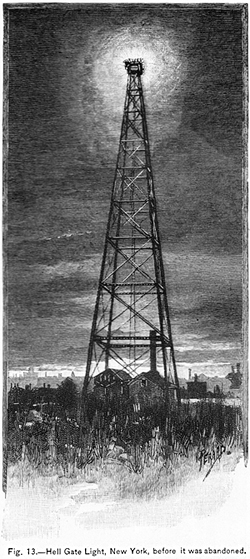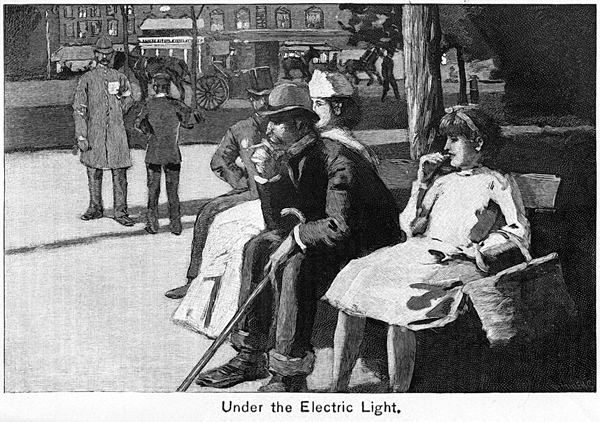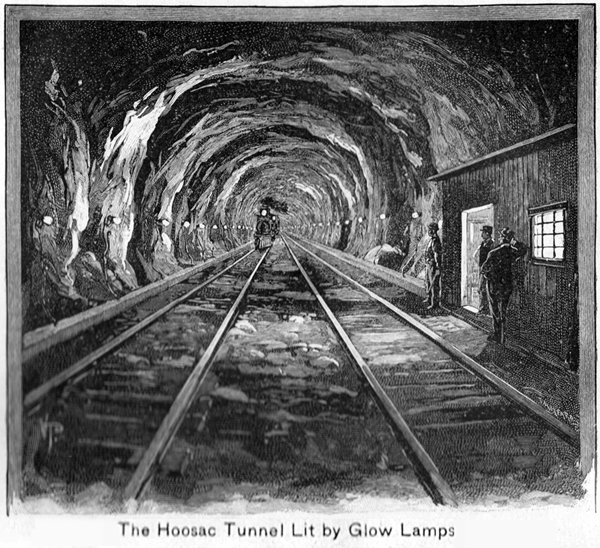Electricity and Light
 Today, electricity and light. The University of Houston's College of Engineering presents this series about the machines that make our civilization run, and the people whose ingenuity created them.
Today, electricity and light. The University of Houston's College of Engineering presents this series about the machines that make our civilization run, and the people whose ingenuity created them.
The 1889 Scribner's Magazine deals with the newness of electricity: in telegraphy, in war, in American commerce, in relation to the human body. One 25-page article in particular is about electricity in lighting. This was nine years after Edison had theatrically lit steamship Columbia with incandescent lamps. So, shouldn't we find Edison footprints all over this article?
Well, let's look: Author Henry Morton begins by naming early pioneers of electric lighting -- Sir Humphry Davy, several French experimenters. But, he says, it's little use talking electric lamps until we have a steady flow of electricity to feed them.
So we learn about the electric generator -- who pioneered it, how one's built, how its armature is wound, the nature of its magnets. Only when we know how to supply electricity, does he deal with electric lamps. He gives greatest credit to two little-known inventors -- Sawyer and Man -- for their 1878 light bulb.
Edison's name finally appears only after nineteen pages. Morgan puts him into perspective with these words:
It is to Mr. T. A. Edison ... that we owe many of the ... modifications which, by cheapening the lamp and diminishing its weight, have extended its range of use
As Morgan describes light bulb designs, Edison emerges as one of several important players. Then Morgan moves on to explain how bulbs are made -- how the glass is blown, loaded, wired and evacuated.
 Next, applications: Morgan is far more interested in public, than domestic, uses. Take the dramatic Hell Gate Light. Hell Gate is a treacherous passage in New York's East River. The Brush-Swann electric company built a tall tower there in 1885 and topped it with a brilliant electric light bulb. The light really did illuminate the way for ships that were nearby. But, outside its bright circle, pilots had trouble getting their night vision back.
Next, applications: Morgan is far more interested in public, than domestic, uses. Take the dramatic Hell Gate Light. Hell Gate is a treacherous passage in New York's East River. The Brush-Swann electric company built a tall tower there in 1885 and topped it with a brilliant electric light bulb. The light really did illuminate the way for ships that were nearby. But, outside its bright circle, pilots had trouble getting their night vision back.
He tells how strings of electric bulbs now light the new five-mile-long Hoosac Tunnel in Western Massachusetts. That brings up the old Christmas-tree-light problem. When we string bulbs along a single wire, one dead bulb cuts off the electric current for the whole string. So they've now learned to wire bulbs in parallel.
The only ordinary citizens we see enjoying this new illumination sit on a bench under a bright street light. And we realize that people who read this article either did so by day or by gaslight. This is about high-technology that has yet to reach them.
The flow of electricity was a tide that arrived with dizzying speed. Shakespeare once wrote about how we "suffer a sea-change/Into something rich and strange." Here I've stumbled into an amazingly detailed account of one such sea change -- a chance to watch the old world being changed into something incomprehensibly rich and strange. And what we watch here is not sifted history, but rather the unfolding of history in the confusion of real time.
I'm John Lienhard at the University of Houston, where we're interested in the way inventive minds work.
H. Morton, Electricity in Lighting. Scribner's Magazine, Jul-Dec, 1889. pp. 176-191-200. (One of four such articles in this volume of Scribners.) All illustrations here are from this source.
These 1885 New York Times and 1887 Grey River Argus articles tell about the demise of the Hell Gate Light.

